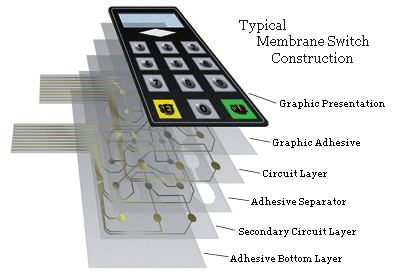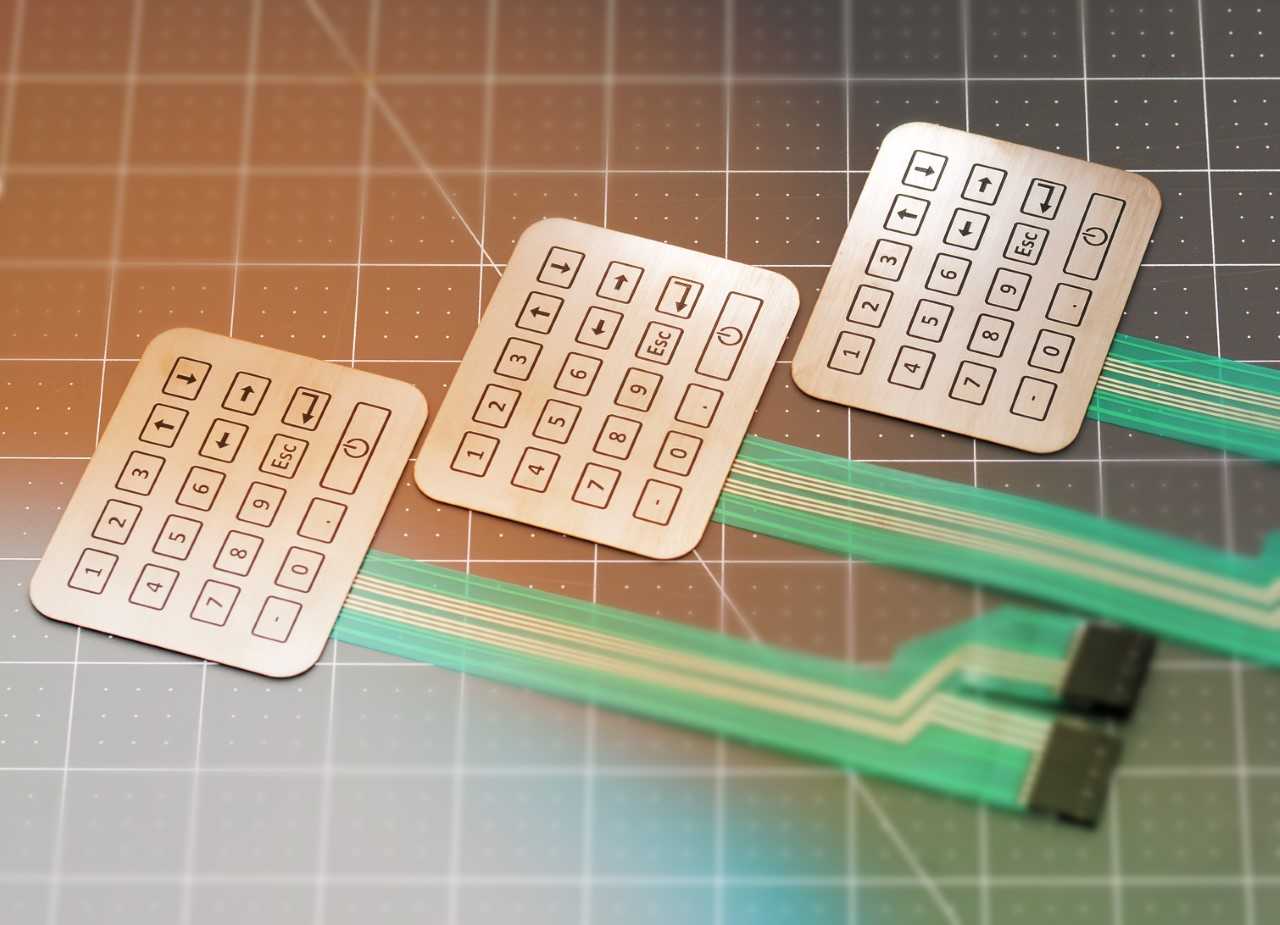Many designers favor working with a proven membrane switch manufacturer for custom builds.
Many designers favor working with a proven membrane switch manufacturer for custom builds.
Blog Article
All About Membrane Layer Switch Over: Recognizing Its Style and Capability
When you think regarding the control user interfaces in modern tools, membrane switches usually come to mind. Let's explore what collections membrane layer switches apart from various other control systems.
What Are Membrane Buttons?

Membrane layer buttons can also be customized relating to form, size, and graphics, enabling makers to develop one-of-a-kind interfaces tailored to certain products. Overall, membrane layer switches play a significant duty in boosting individual experience across a wide range of applications.
How Membrane Changes Work
When you push a key on a membrane switch, it triggers a simple yet effective system. The top layer, typically made from flexible material, presses down onto a conductive layer under it. This activity bridges the space between conductive traces, completing an electric circuit. As soon as the circuit shuts, it sends out a signal to the device's controller, which analyzes your input.
You'll notice that the responsive feedback varies based upon the button design, supplying either a soft click or a more noticable feedback. Once you launch the secret, the membrane layer go back to its original setting, resuming the circuit and stopping the signal. This process happens virtually instantaneously, making sure a responsive customer experience.
Membrane buttons are preferred because of their sturdiness and resistance to dust and moisture, making them ideal for numerous applications, from family devices to clinical devices. Understanding this procedure helps you value their prevalent usage.
Trick Parts of Membrane Layer Switches
Understanding the essential elements of membrane switches is fundamental for comprehending their performance and design. At the core, you'll discover the graphic overlay, which offers the aesthetic interface for customers. Below that, there's a spacer layer that separates the circuit layers, guaranteeing that they don't make get in touch with until pushed. The circuit layer is where the magic takes place; it consists of conductive traces that finish the circuit when you press the button. Another necessary aspect is the adhesive backing, enabling the switch to abide by surface areas firmly. The protective layer guards versus environmental aspects and use, prolonging the switch's lifespan. Each part plays a substantial role in ensuring dependable efficiency and individual interaction. By comprehending these elements, you'll acquire insight right into just how membrane changes operate and their significance in different applications.
Products Used in Membrane Layer Change Layout
The performance and toughness of membrane switches greatly rely on the materials utilized in their design. You typically encounter polyester and polycarbonate as main substrates as a result of their exceptional strength and versatility. These materials resist scratches and chemicals, making them excellent for demanding atmospheres.
The conductive layers typically make use of silver or carbon, picked for their integrity and conductivity. membrane switch manufacturer. Silver supplies remarkable efficiency, while carbon is an affordable choice. For the overlay, you may take into consideration a matte or shiny surface, depending upon your visual needs and user experience
Adhesives play a crucial function too; they bond layers safely and ensure durability. Make sure to choose adhesives that hold up against environmental aspects like temperature level and moisture. Ultimately, don't overlook the significance of a great printing method for graphics, as it improves both performance and aesthetic charm. Choosing the right materials will certainly assure your membrane layer switch stands the test of time.
Design Factors To Consider for Membrane Layer Switches
While creating membrane switches, it's essential to take into account numerous aspects that affect their capability and customer experience. Start by focusing on the design and button dimension; make particular they're instinctive and easy to navigate.
Do not forget the graphic style; clear labeling and shade comparison are significant for presence. Verify your layout accommodates ecological factors, like wetness or temperature level variants, which could affect efficiency. Finally, keep in mind the relevance of testing prototypes with genuine customers to collect feedback and make necessary adjustments. This repetitive procedure aids you fine-tune the layout, verifying it meets both practical and visual requirements properly. By thoroughly thinking about these elements, you'll produce a membrane switch that improves functionality and fulfillment.
Applications of Membrane Layer Switches
Membrane buttons are functional elements discovered in different applications, from industrial equipment to home consumer electronic devices. You'll see their influence in equipments that need durable user interfaces and in tools that take advantage of smooth layouts. Understanding these applications assists you value the capability and usefulness of membrane buttons in everyday technology.
Industrial Equipment Usage
When you're looking to improve the functionality of commercial devices, membrane layer buttons supply a reputable option that combines toughness with easy to use design. These switches are best for harsh environments, supplying resistance to dirt, dampness, and chemicals. Embrace membrane layer switches to improve your operations and improve total performance.
Consumer Electronic Devices Assimilation
In the domain name of consumer electronic devices, membrane buttons play an important function in enhancing individual interaction and device capability. You'll locate them in tools like microwaves, push-button controls, and gaming consoles, giving a seamless method to communicate with innovation. Their streamlined design enables very easy assimilation right into different items, making controls instinctive and easy to use. With their capacity to integrate graphics and backlighting, you can take pleasure in a modern visual that enhances the gadget's overall appearance. Membrane buttons likewise ensure durability and resistance to dirt and moisture, expanding the life expectancy of your electronic devices. By picking membrane layer switches, you boost not simply the performance yet likewise the design of your devices, making day-to-day interactions smooth and pleasurable.
Benefits and Disadvantages of Membrane Switches
While membrane layer switches provide a variety of benefits, they likewise come with some drawbacks that you should think about. One considerable advantage is their small style, making them perfect for space-constrained applications.

However, there are drawbacks. Membrane buttons can have a shorter life expectancy compared to mechanical buttons, especially under heavy usage. They can also be less responsive, which may impact customer responses throughout procedure. In addition, if damaged, repairing them can be tough and commonly requires total replacement. Inevitably, their sensitivity to extreme temperatures and environmental conditions might restrict their efficiency in specific setups. Stabilizing these pros and disadvantages will certainly aid you identify if membrane click for more layer buttons are the appropriate fit for your project.
Regularly Asked Concerns
The Length Of Time Do Membrane Switches Over Commonly Last?
Membrane layer changes generally last between 5 to one decade, depending upon use and ecological problems. You'll desire to evaluate variables like wear, direct exposure to dampness, and temperature level variations to assess their long life properly.
Can Membrane Layer Changes Be Customized for Certain Designs?
Yes, you can tailor membrane switches to fit certain layouts (membrane switch manufacturer). You'll have the freedom to select shades, forms, and formats that match your task's requirements, guaranteeing they blend seamlessly with your general aesthetic
What Is the Cost Array for Membrane Switch Over Manufacturing?
The expense array for membrane layer switch production normally drops between $1 and $10 per system, depending on aspects like layout intricacy, amount, and materials. You can get quotes from manufacturers to discover the finest alternative.

Are Membrane Layer Changes Water-proof or Immune?
Membrane layer buttons can be designed to be waterproof or immune, relying on materials utilized and building our website methods. If you need them for wet atmospheres, assure you specify those demands throughout the design process.
Exactly How Do Membrane Layer Switches Contrast to Traditional Buttons?
Membrane layer buttons are normally thinner and extra flexible than typical switches, using a streamlined layout. They're often simpler to clean and integrate, however could not provide the responsive responses you're made use of to with mechanical alternatives.
Conclusion

Report this page